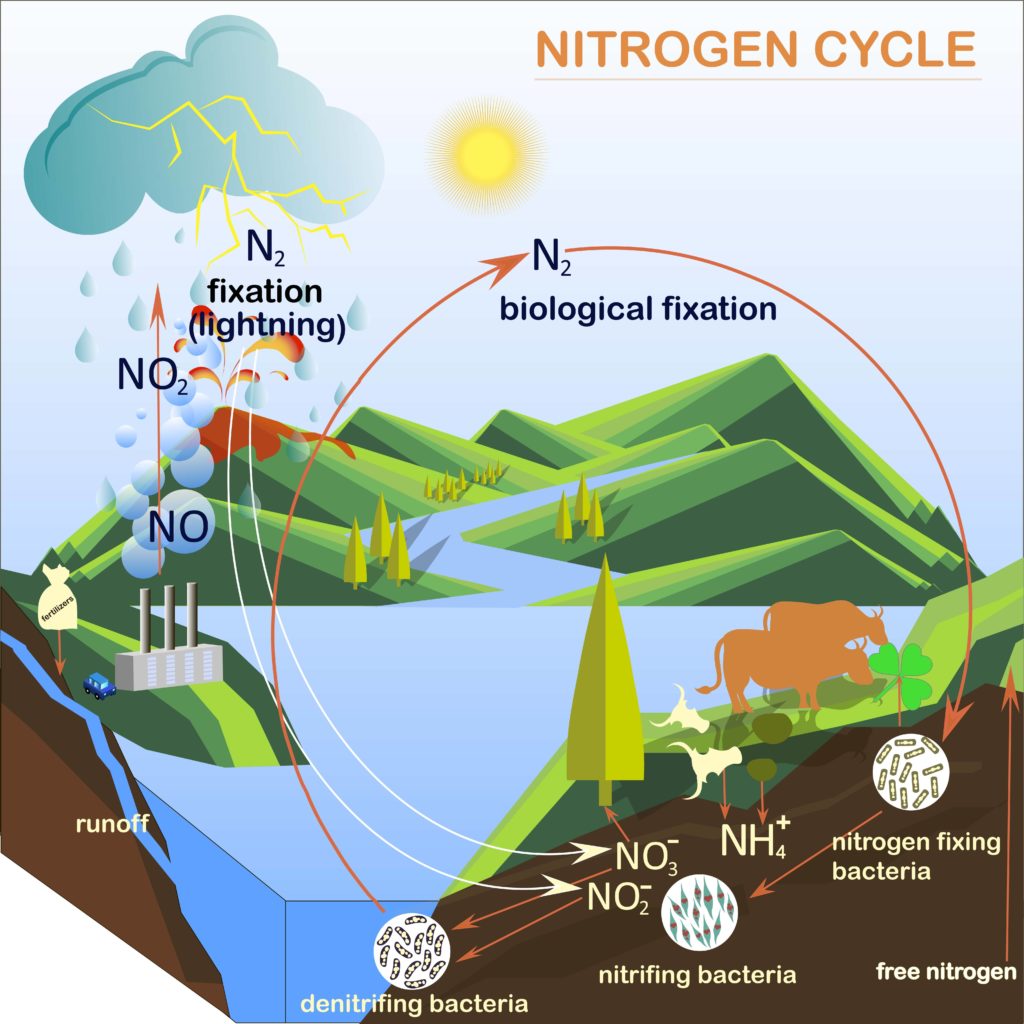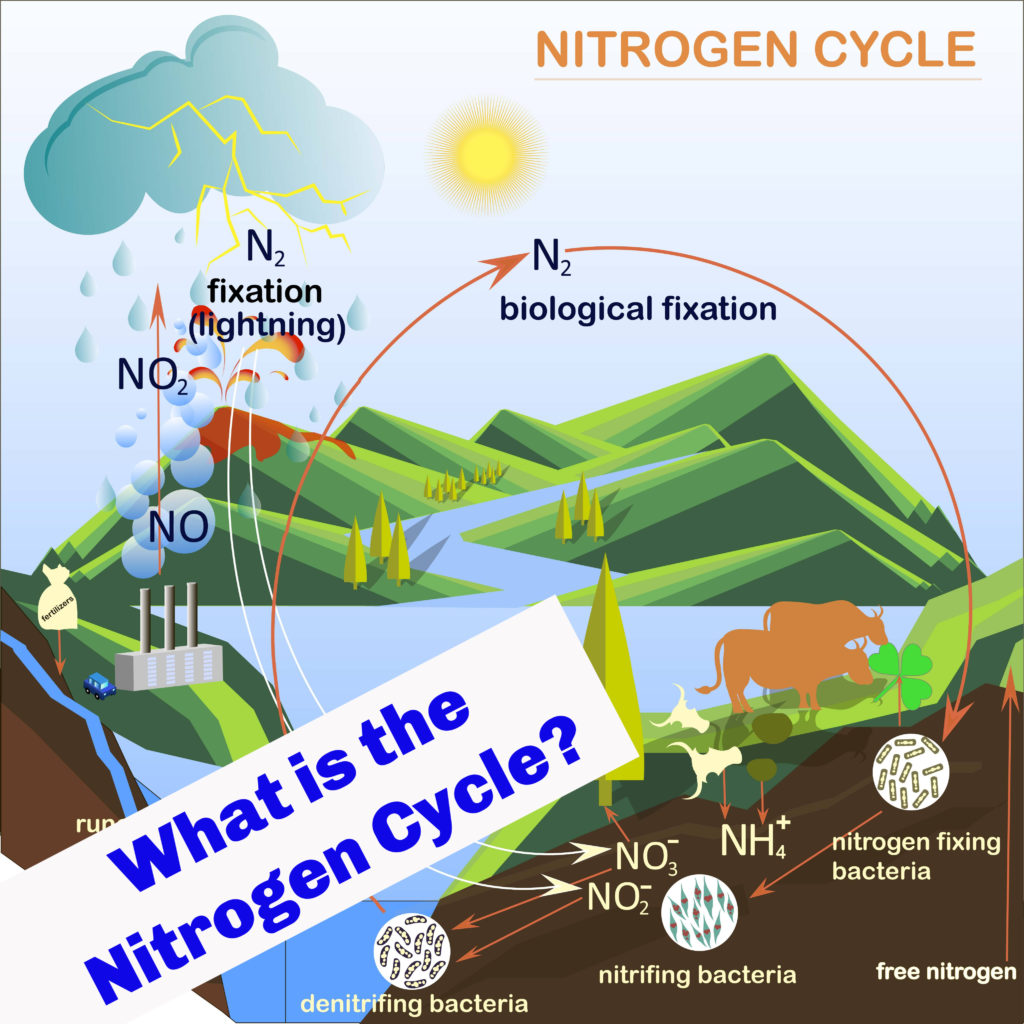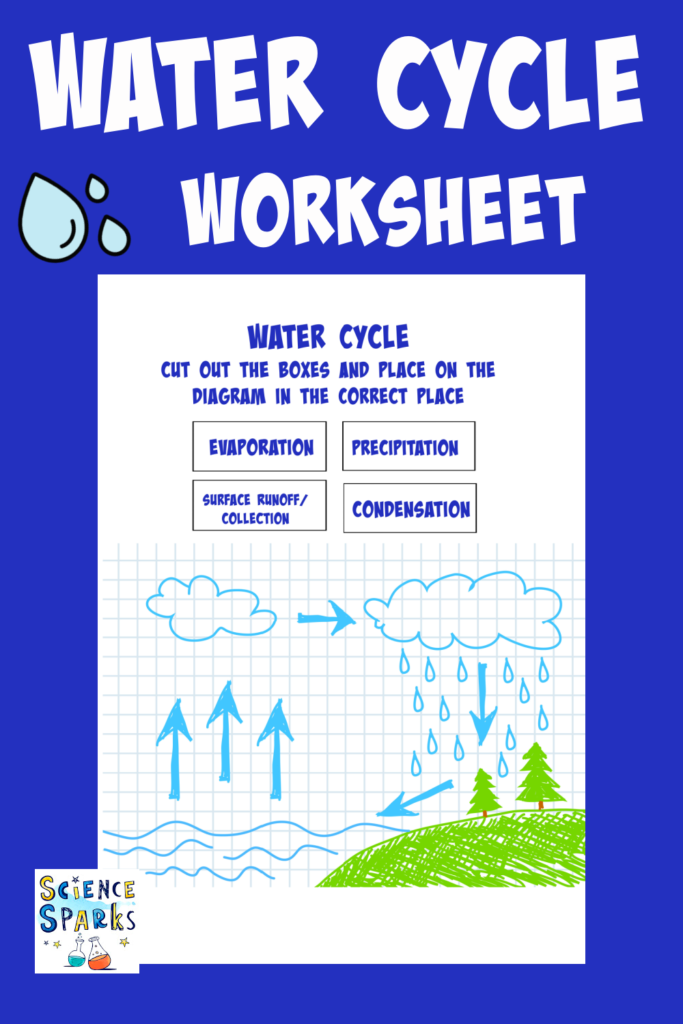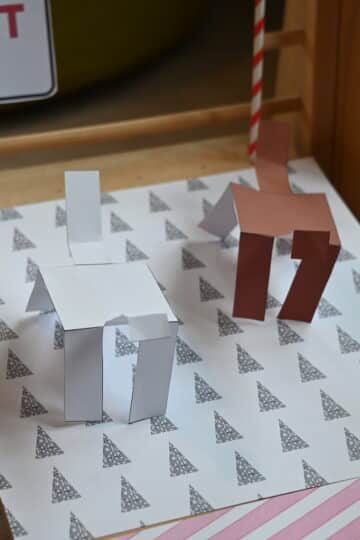Nitrogen is an essential element for living organisms as it's needed to make proteins for growth and repair and other biological functions. Nitrogen moves through the air, soil and living organisms ( plants, animals and bacteria ) in a process called the Nitrogen Cycle.
Where is nitrogen found?
- In the air as a gas. About 78% of the air in our atmosphere is nitrogen, but it is generally not usable by animals and plants in this form.
- Plants in the form of proteins
- Animals in the form of proteins
- Animal and plant waste
- In the soil
Nitrogen is found in different states at various points of the cycle.
Atmospheric Nitrogen N2
Nitrates NO3
Nitrites NOs
Ammonium NH4
Stages of the Nitrogen Cycle
Legume plants ( peas, beans and clover ) are home to nitrogen fixing bacteria. These convert nitrogen gas to nitrates which are nitrogen in a form that plants can use to make proteins.
Non legume plants absorb nitrates from the soil.
Animals eat plants and so get their nitrogen from plant proteins.
Some nitrogen is passed back to the soil as bacteria decompose animal waste.
Free living nitrifying bacteria convert ammonium in the soil into nitrates.
Bacteria are a vital part of the nitrogen cycle as it is because of them that nitrates are available for plants to absorb via their roots. Plants cannot use nitrogen in its other forms.
Denitrifying bacteria in the soil convert nitrates back into nitrogen gas.
Nitrogen gas is also converted to nitrates by lightning!!

Nitrogen Cycle Facts
The process where bacteria convert nitrogen into ammonium is called nitrogen fixation.
The next process is called nitrification, this is where bacteria convert ammonium into nitrates.
Ammonification is the process where plant remains are converted from nitrates back to ammonium.
Plants need nitrogen to make chlorophyll which is needed for photosynthesis.
Nitrous Oxide is a greenhouse gas. Too much nitrous oxide can lead to acid rain.
How do humans impact the Nitrogen Cycle?
Combustion of fossil fuels releases nitric oxide into the air which combines with other elements to form smog and acid rain.
The use of nitrogen fertilisers introduces extra nitrates to the soil which disrupts the natural nitrogen cycle. Excess nitrogen leaches into groundwater where it can lead to excessive algae growth.

Similar posts
Make a water cycle model to learn about the water cycle.

Last Updated on May 2, 2021 by Emma Vanstone




Leave a Reply